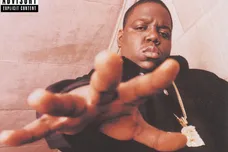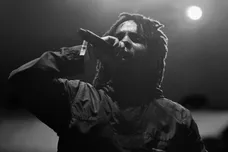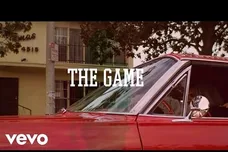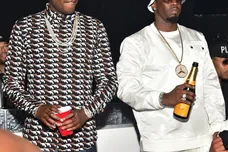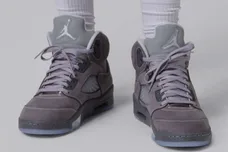Los Angeles rapper Earl Sweatshirt’s rise in the Hip-Hop scene began in 2009 as a member of the alternative rap collective Odd Future. While fellow Odd Future members such as Tyler, the Creator and Frank Ocean have become worldwide stars in their own right, Sweatshirt has carved his own path in the underground and experimental rap scene. Sweatshirt is known for his lyrical ability, word play, and rhyme schemes, which are often compared to late rapper MF DOOM’s, and his sound has progressed and changed significantly since Odd Future’s inception. This list will rank all four of his studio albums. It will only contain full-length studio albums, so mixtape project ‘Earl’, 2020 EP ‘Feet of Clay’, and EP ‘Solace’ will not be included.
4. SICK! (2022)
Sweatshirt’s most recent album, ‘SICK!’ was released in 2022, four years after his last full length project, ‘Some Rap Songs’. While Sweatshirt became known for his sludgy, dirty sound, he veered away from it on this project in favor of clarity. ‘SICK!’s’ release was a sign of maturity for Sweatshirt as he abandoned many of the shock-rap qualities of his earlier projects and instead rapped about topics such as fatherhood and overcoming addiction and other mental health issues.
Highlights of the album include the intro track ‘Old Friend’ which contains a sound similar to many of the songs on Earl’s previous album, ‘Some Rap Songs’, as well as the final track of the album ‘Fire in the Hole’ as Earl raps about his maturity in relationships and as an artist.
The project is still obscure, as tracks such as ‘2010’ and ‘Tabula Rasa’ feat. Armand Hammer features Earl on beats unlike any other, however, the project lacks the indescribable rawness that was present on ‘Some Rap Songs’. Despite this, ‘SICK!’ was one of the best albums of the year upon its release and its low placement on this list is only due to the strength of Earl’s previous three projects.
3. Doris (2013)
Earl’s first full-length album came after a three year hiatus due to Sweatshirt’s mother sending him to a boarding school in Samoa. His disappearance sparked the “Free Earl” campaign by Odd Future and ‘Doris’ was one of the most anticipated albums of 2013. At the time of its release, Sweatshirt was only 19 years old, his youthful hunger on full display on this project.
‘Doris’ is arguably Sweatshirt’s most technically proficient project in terms of rhyme scheme and lyricism as tracks such as ‘Woah’ contain flows where nearly every word rhymes. The album also includes features from fellow Odd Future members Tyler, the Creator, Frank Ocean, and Domo Genesis, as well as features from Vince Staples, RZA, and Mac Miller. Sweatshirt’s youthful nature is apparent on tracks such as Sasquatch as ‘Doris’ occurred within a metamorphosis for Earl as he began to abandon his shock-rap qualities in favor of more substance-driven songs.
Highlights from the album include ‘Chum’, a deeply personal track that shows Earl’s maturity as he speaks on his difficult relationship with his father and other issues of adolescence. ‘Hive’, which features Vince Staples and Casey Veggies and displays Sweatshirt’s aptitude for whimsical wordplay and rhyme schemes.
This dichotomy of subject matter is consistent throughout the album, as Earl stayed true to his Odd Future roots, and also displayed his ability to deliver tracks with emotional weight behind them. Tyler, the Creator even mentions this contrast on his intro to ‘Woah’ as he tells Earl that just because he made ‘Chum’ and “got all personal” does not mean he can’t go back to that “old fucking 2010 shit”. ‘Doris’ lacks the artistic maturity of some of Sweatshirt’s later projects, yet Earl’s potential and prodigious talent shined throughout the album and was a testament of things to come.
2. I Don’t Like Shit, I Don’t Go Outside (2015)
Many fans believed Sweatshirt would take a more conventional approach to his music after the success of ‘Doris’ and the growing star-power of Tyler, the Creator and Frank Ocean in 2015. ‘I Don’t Like Shit, I Don’t Go Outside’ was presumed to be the sophomore breakout album that propelled Sweatshirt into the more mainstream sectors of the Hip-Hop scene, however, Sweatshirt decided to do the total opposite, as “IDLSIDGO” is one of the darkest, most depressing albums of the past decade.
“IDLSIDGO” begins with ‘Huey’, a track about Earl’s struggles with addiction as he raps “I spent the day drinking and missing my grandmother”. The project continues with the three track run of ‘Mantra’, ‘Faucet’, and ‘Grief’ in which Sweatshirt details his continuing struggles with addiction, depression, and the grief of his grandmother’s passing.
‘Faucet’ and ‘Grief’ are two of the best tracks on the album and two of the best of Earl’s discography. He enmeshes his lyrical ability with intense storytelling and psychological turmoil. “IDLSIGO” also contains features from Dash, Wiki, Na’kel Smith, and Vince Staples. Smith’s feature on ‘DNA’ is one of the most well-remembered. Na’kel raps about his own grief following his friend’s recent passing.
The project is ten tracks and only has a run-time of thirty minutes, yet not a second is wasted as it holds its listeners in a grief-stricken haze as Sweatshirt delivers one of the most gut-wrenching and depressing performances of any artist of the last decade. ‘I Don’t Like Shit, I Don’t Go Outside’ is an audial display of the pits of depression and grief and Sweatshirt encapsulates the feeling as only he can. The only thing keeping this album from the number one spot on this list is the brilliance of Sweatshirt’s following project.
1. Some Rap Songs (2018)
No one could have predicted what Sweatshirt would do next following ‘I Don’t Like Shit, I Don’t Go Outside’, as Earl proved on that album that he was in a lane entirely his own. At only twenty-five minutes long, ‘Some Rap Songs’ leans even further into the experimental and conceptual as the album feels less like a musical project and more like a mind-bending trip into the psyche of Sweatshirt’s mind.
The project is deeply personal and psychological as Earl speaks on many topics present in his previous work, such as depression, addiction, and his relationships with his parents, yet ‘Some Rap Songs’ features a vulnerability that even ‘I Don’t Like Shit, I Don’t Go Outside’ did not. ‘Some Rap Songs’’ brilliance lies in its sonic uniqueness, as Sweatshirt raps complexities over subdued soulful loops that often do not even include drums.
The album is a symbol of Sweatshirt’s artistic maturity, as he all but neglects any sounds even reminiscent of conventionality and instead creates a project that is beyond comparison. The album begins with ‘Shattered Dreams’, as Earl allows listeners to enter what can only be described as a “dream-state” or place of limbo, and Sweatshirt proceeds to hold listeners there as each track following bleeds into the next, causing the album to feel experiential and otherworldly.
Sweatshirt’s subject matter is loose and fleeting, as Los Angeles rappers transitions topics from line-to-line, and yet this messiness and confusion personifies Sweatshirt’s mental state and somehow ends up cohesive and highly conceptual. There is an indescribable sinking nature to the project as it fades in-and-out as Sweatshirt lays down some of his most complex rhyme schemes and flows.
Playing Possum
The thirteenth track of the album, ‘Playing Possum’ also features both of Sweatshirt’s parents, Cheryl Harris and Keorapetse Kgositsile, as Earl shares an audio clip of one of his mother’s lectures and one of his late father’s poems. The final track of the album ‘Riot!’ is an instrumental that samples the 1969 song “Riot” by Hugh Masekela. The decision to end the project with this sort of silence is a moment of genius by Sweatshirt, and despite the absence of Earl’s lyrical ability, which was at one point his calling card, the song is one of Sweatshirt’s most beloved by fans. ‘Some Rap Songs’ is a project that transcends genre and tests the bounds of musical creativity. Its sheer uniqueness and artistry places it at number one on this list as it examines the human psyche through its conceptual and experimental form.



